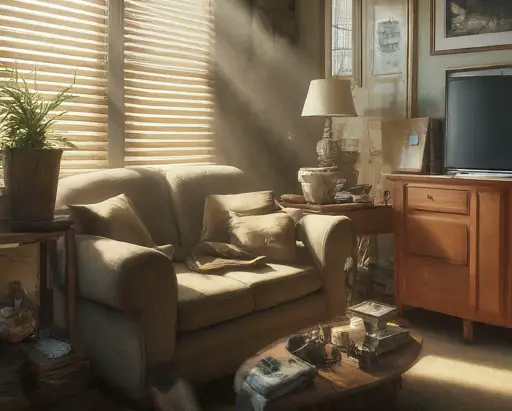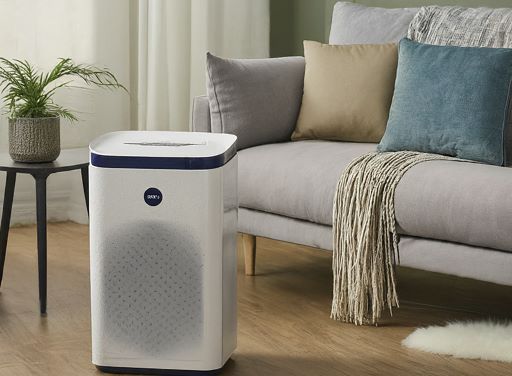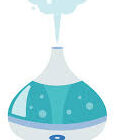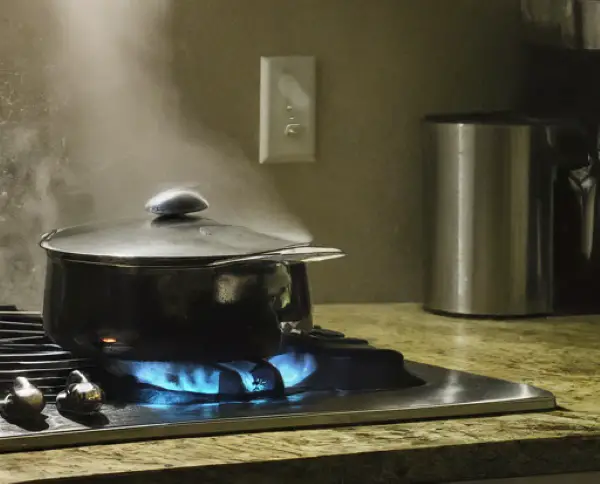10 Ways to Get Rid of Stale Air From Your Home
Have you ever entered a room in your house and felt like the air was thick enough to cut with a knife and stagnant?
That’s stale air!
It can be unpleasant, stuffy, and even lead to headaches or drowsiness. But what exactly is stale air, and what causes it?
Stale air in the house refers to air that has stagnated and lost its freshness. Such air often lacks fresh oxygen.
It can also contain contaminants like dust, pet dander, and volatile organic compounds (VOCs) emitted from everyday household items.
This stagnant air can lead to a sense of stuffiness and various issues, including:
Respiratory problems: Stale air exacerbates symptoms of asthma and allergies due to dust particles and other irritants.
Headaches and fatigue: Lack of fresh oxygen can cause headaches and feelings of tiredness.
Unpleasant odors: Stale air can trap and amplify existing odors in the house, making it smell stale or stuffy.
Understanding what causes stale air can help you identify the culprits and take steps to remove them.
What causes stale air in the house: 5 main things

When you know the causes of a certain problem, you will be halfway through solving it. There are many causes of stale air in the house, but these five are the most outstanding ones:
1. Lack of ventilation
Closed windows and doors prevent fresh air from entering and stale air from escaping. This is especially common in homes with poor ventilation systems.
If you must, please install ventilation in a utility room that has no windows. This will help to remove the stagnant air by allowing more fresh air from outside, inside.
2. High humidity
Excessive moisture in the air can contribute to a feeling of stuffiness and can also trap odors.
If unchecked, it can lead to the growth of black mold in the house. This will make the air stuffier, and remember, under the right conditions, mold can grow fast, in 48 hours.
Run a dehumidifier to lower the humidity level. It is recommended that you keep it at 30 to 50% all the time, even during the winter.
3. Cooking and cleaning activities
Cooking, cleaning, and even burning candles emit VOCs that can pollute the air indoors.
Burning food increases the staleness, and so does ignoring doing the dishes for days. In the kitchen, the humidity levels can be too high due to the steam you generate while cooking. Therefore, you might need to get a small dehumidifier for the kitchen.
4. Dust and pet dander
Dust, pet dander, and other allergens can accumulate and contribute to stale air, especially if left unaddressed.
Running a Levoit air purifier or any other that has HEPA filters can help with this, as the filters can trap all pollutants, including odors.
5. Mold and mildew growth
Mold and mildew growth can release harmful spores and musty odors, further worsening indoor air quality.
Different types of mold could be growing in your home. None is good for your health.
If you have 70 percent humidity inside, or higher, you are going to experience mold growth.
It is recommended to keep your indoor humidity level between 30 and 50% to prevent mold or mildew growth.
Also note, if it goes lower than 30%, you will experience static electricity in the house.
How do I get rid of stale air smell in my house? 10 ways
Don’t live with the uncomfortable and sickening stale air in the house. There are simple solutions to this problem, as you can see here:
Open windows and doors: This is the simplest and most effective way to refresh your home. Aim for cross-ventilation by opening windows on opposite sides of your house to create airflow.
Run exhaust fans: Use exhaust fans in kitchens and bathrooms while cooking, showering, and bathing to remove moisture and odors directly from the source.
Change air filters: Regularly changing HVAC system air filters traps dust and allergens, improving overall air quality.
Deep clean your home: Clean the carpets, furniture, and surfaces to remove dust and pet dander that can contribute to stale air.
Use natural air fresheners: Opt for natural air fresheners like bowls of vinegar, baking soda, or essential oils instead of chemical-laden sprays.
Consider houseplants: Certain houseplants, like spider plants and peace lilies, are known to improve air quality by removing common air pollutants.
Invest in an air purifier: Air purifiers can effectively remove dust, allergens, and other airborne particles, making the air feel fresher and healthier.
Check for mold and mildew: If you suspect mold or mildew growth, address the moisture source and consider professional remediation services to prevent health risks.
Control humidity levels: Use a dehumidifier in areas prone to high humidity to prevent musty odors and mold growth.
Maintain your HVAC system: Schedule regular maintenance for your heating, ventilation, and air conditioning systems to ensure proper airflow and function.
Can a dehumidifier help with stale air?
While a dehumidifier primarily removes excess moisture from the air, it can indirectly help with stale air in certain situations.
In humid environments, the feeling of stuffiness often arises from a combination of high humidity and stagnant air.
By reducing the humidity, a dehumidifier can contribute to a more comfortable and less stuffy atmosphere.
However, relying solely on a dehumidifier might not address all contributing factors to stale air. You need to deploy several strategies, such as ventilation, cleaning, and air purification, for comprehensive stale air removal.
Can a humidifier help remove stale air?
A humidifier is intended to add moisture to the air. Therefore, it wouldn’t directly eliminate stale air.
In fact, using a humidifier in an already humid environment can make the problem worse. It creates an uncomfortable and potentially mold-prone situation.
Before using a humidifier, it’s crucial to assess your indoor humidity levels. You can consider investing in a hygrometer to measure humidity. Ensure it stays within the recommended range of 30–50%.
What is a good air purifier for stale air?

If there is an appliance that you should buy to help with stale air, indeed, any other air pollutants, it is the air purifier.
Many air purifiers can effectively solve the problem of stale air by removing dust, allergens, and other airborne contaminants. When choosing an air purifier for stale air, consider factors like:
HEPA filter: Look for air purifiers with a HEPA (High-Efficiency Particulate Air) filter, which is highly effective at capturing
ACH rate: This is the rate at which the air purifier changes the air in an hour. An air change per hour rate of 4 or more hours is recommended.
Space rating: Get an air purifier that has a proper space rating. If it is too small, it won’t be effective.

